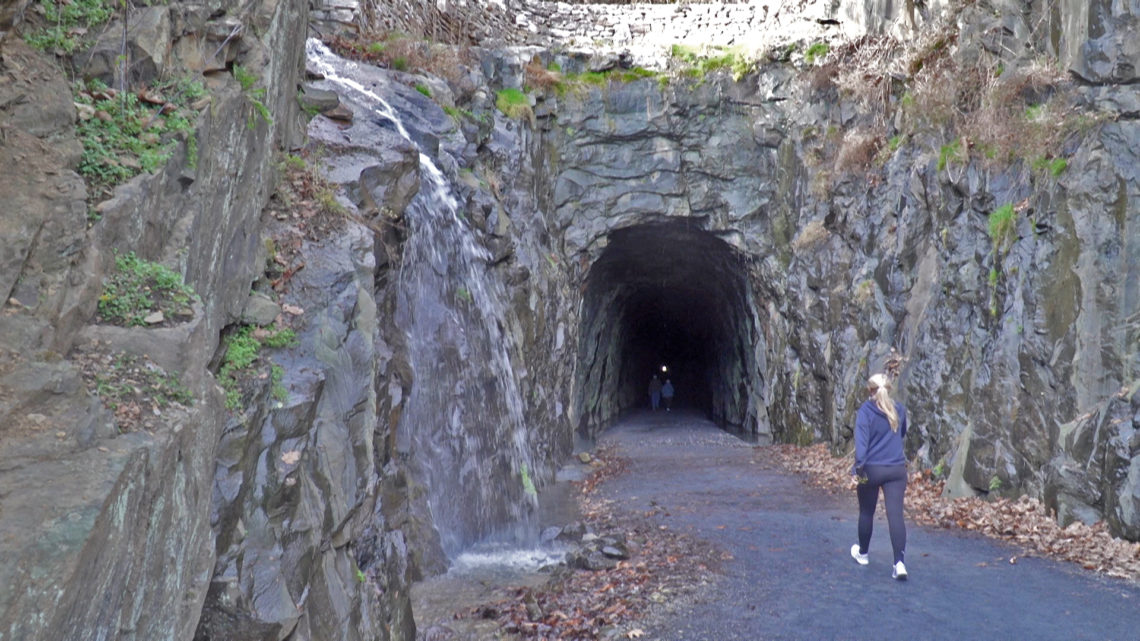
Blue Ridge Tunnel
The Virginia Department of Transportation has given an old railroad tunnel a new life by converting it to a tunnel used heavily by hikers and cyclists, while also enjoyed by wildlife enthusiasts, history and railroad buffs, school groups and geologists.
When Virginia’s Blue Ridge Tunnel was built in the 1850s through Afton Mountain, part of the Blue Ridge mountain range, it was the longest railroad tunnel in the world. The 4,264-foot-long tunnel continued in operation until 1944.
Recently restored through a partnership with the Claudius Crozet Blue Ridge Tunnel Foundation and local, state and federal resources, including support from Nelson County and the Virginia Department of Transportation, it is now the centerpiece of one of America’s most unique trails.
It is uniquely located at the convergence of the southern entrance of Shenandoah National Park’s Skyline Drive, the northern entrance of the Blue Ridge Parkway, the Appalachian Trail and U.S. Bicycle Route 76. Both Interstate 64 and U.S. 250 cross over the tunnel at the Rockfish Gap.
Interpretive signage provides information about the tunnel’s history and construction, including the work of local slaves and Irish immigrants. The 2.25-mile trail, with a 0.8-mile stretch through the tunnel, is an experience that can be enjoyed by a variety of visitors.
It was long the desire of Nelson County to convert the site into a trail, and funding was received from multiple sources. The cost of the project was $8.2 million.
Within 10 days of its public opening in November 2020, the trail saw over 7,000 visitors, and social media continues to document the positive experiences of hikers of all ages to the site.
Read additional stories from this state:
2021
2020


